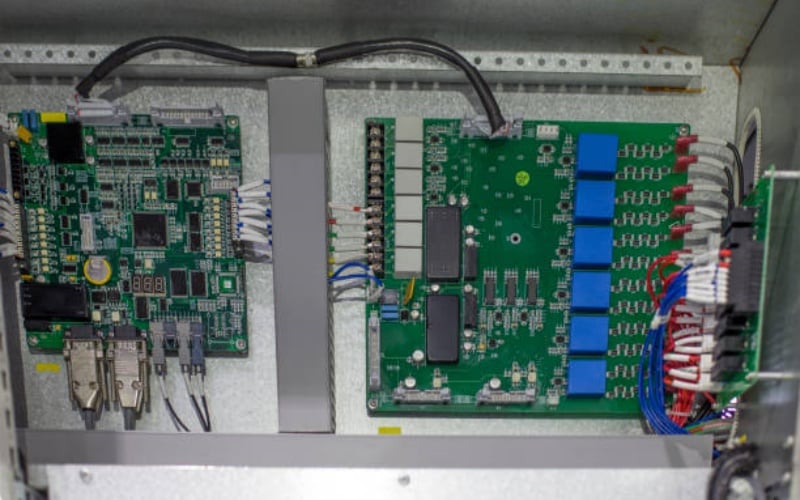Introduction
When it comes to cooling sensitive components like electronic devices, lasers, and power electronics, it is crucial to have an effective and efficient cooling system. custom cold plates are one such solution for managing the heat generated by these components. In this article, we will discuss what custom cold plates are, how they work, their various types and applications, and the benefits they offer. We will also provide some tips for selecting the right custom cold plate for your application.
What are Custom Cold Plates?
Custom cold plates are a type of heat exchanger that uses a liquid coolant to dissipate heat from a component to the surrounding environment. They are typically made of a thermally conductive material such as copper or aluminum and are customized to meet the specific requirements of the application. Custom cold plates can be designed in different shapes and sizes, and can incorporate features such as fins, microchannels, and manifolds to improve their cooling performance.
How Do Custom Cold Plates Work?
Custom cold plates work based on the principles of conduction and convection. When a hot component is mounted onto a cold plate, the heat is transferred by conduction from the component to the plate. The liquid coolant flowing through the channels in the plate absorbs the heat and carries it away to the heat exchanger or ambient environment. The coolant is then circulated back to the plate to repeat the process. The effectiveness of custom cold plates depends on several factors such as the thermal conductivity and thickness of the plate, the flow rate and pressure of the coolant, and the environmental conditions.
Types of Custom Cold Plates
Custom cold plates can be classified into several types based on their design and functionality:
- Press-fit cold plates: These are simple, low-cost cold plates that are mounted between a component and a heatsink using screws or clips. They are suitable for applications with low to moderate heat dissipation requirements.
- Embedded cold plates: These are cold plates that are embedded within the component or a PCB. They provide highly efficient cooling and compact form factors but can be expensive and difficult to manufacture.
- Stacked cold plates: These are cold plates that are stacked one on top of another to create a multi-level cooling system. They are useful for applications with high heat dissipation requirements or limited space.
- Specialty cold plates: These are cold plates that are designed for specific applications such as ultrasonic cleaning, high-pressure cooling, or cryogenic cooling. They require specialized knowledge and expertise to design and manufacture.
Applications of Custom Cold Plates
Custom cold plates have numerous applications in various industries such as aerospace, automotive, medical, and defense. Some common applications include:
- Laser cooling
- Power electronics cooling
- LED lighting cooling
- Battery cooling
- Fluid cooling
- Medical device cooling
- Rapid prototyping cooling
- Satellite thermal management
Benefits of Custom Cold Plates
There are several benefits of using custom cold plates for cooling applications:
- High cooling efficiency: Custom cold plates can achieve high heat transfer rates and low thermal resistance, resulting in efficient cooling of high-power components.
- Flexibility: Custom cold plates can be designed to meet the specific requirements of the application, such as size, shape, and thermal performance.
- Reliability: Custom cold plates are designed and tested to ensure durable and reliable performance in harsh environments.
- Coolant compatibility: Custom cold plates can be designed to work with a wide range of coolants, including water, oil, and refrigerants, depending on the application requirements.
- Reduced system complexity: Custom cold plates can eliminate the need for complex liquid cooling loops and external heat exchangers, simplifying the overall cooling system design.
How to Select the Right Custom Cold Plate
Choosing the right custom cold plate for your application requires careful consideration of several factors:
- Heat load: The cold plate should be capable of dissipating the expected heat load from the component or system.
- Coolant flow rate and pressure: The cold plate should be designed to operate with the specified coolant flow rate and pressure to achieve optimal cooling performance.
- Fluid type and compatibility: The cold plate should be compatible with the specified fluid type and concentration to ensure long-term durability and performance.
- Environmental conditions: The cold plate should be designed to withstand the expected environmental conditions, such as temperature, humidity, vibration, and shock.
- Cost and lead time: The cold plate should be cost-effective and have a reasonable lead time for manufacturing and delivery.
Conclusion
Custom cold plates are an effective and versatile cooling solution for high-power electronic and thermal management systems. By understanding the various types, applications, and benefits of custom cold plates, you can make an informed decision about implementing them in your application. Remember to consider the specific requirements and constraints of your application when selecting the right custom cold plate, and partner with a reliable and experienced manufacturer who can deliver customized solutions that meet your needs.

